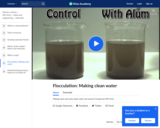
Making clean and tasty water with cool science!
- Subject:
- Chemistry
- Physical Science
- Material Type:
- Lesson
- Provider:
- Khan Academy
- Author:
- Sal Khan
- Date Added:
- 09/22/2013

Making clean and tasty water with cool science!
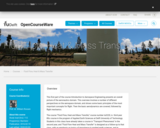
The course "Fluid Flow, Heat and Mass Transfer," course number ta3220, is third-year BSc course in the program of Applied Earth Sciences at Delft University of Technology. Students in this class have already taken a course in "Transport Phenomena" in the second year, and "Fluid Flow Heat and Mass Transfer" is designed as a follow-up to that class, with an emphasis on topics of importance in applied earth sciences, and in particular to Petroleum Engineering, groundwater flow and mining.
In practice, however I start over again with first principles with this class, because the initial concepts of the shell balance are difficult for students to grasp and can always use a second time through. The course covers simple fluid mechanics problems (rectilinear flow) using shell balances, for Newtonian and power-law fluids and Bingham plastics. Turbulence for Newtonian fluids is covered in the context of friction factors for flow in pipes, flow around spheres and flow in packed beds.
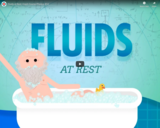
The video resource "Fluids at Rest: Crash Course Physics #14" is included in the "Sociology" course from the resources series of "Crash Course". Crash Course is a educational video series from John and Hank Green.
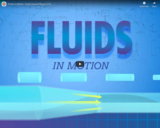
The video resource "Fluids in Motion: Crash Course Physics #15" is included in the "Sociology" course from the resources series of "Crash Course". Crash Course is a educational video series from John and Hank Green.
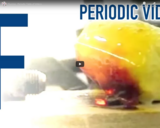
We visit a fluorine expert to finally show you this incredibly reactive element in action. This video is one of the 118 clips included in the periodic table of elements themed collection created by Brady Haran and the University of Nottingham in the UK.

During the associated lesson, students have learned about Newton's three laws of motion and free-body diagrams and have identified the forces of thrust, drag and gravity. As students begin to understand the physics behind thrust, drag and gravity and how these relate these to Newton's three laws of motion, groups assemble and launch the rockets that they designed in the associated lesson. The height of the rockets, after constructed and launched, are measured and compared to the theoretical values calculated during the rocket lesson. Effective teamwork and attention to detail is key for successful launches.
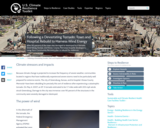
After 90 percent of the town was damaged or destroyed by a tornado, Greensburg, Kansas, and Kiowa County Memorial Hospital developed a Long-Term Community Recovery plan to rebuild for resilience.
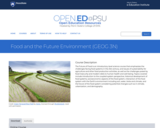
The Future of Food is an introductory-level science course that emphasizes the challenges facing food systems in the 21st century, and issues of sustainability for agriculture and other food production activities, as well as the challenges posed by food insecurity and modern diets to human health and well-being. Topics covered include introduction to the coupled-system perspective, historical development of food systems, socioeconomic aspects of the food system, interaction of the food system with the Earth's environment including soil, water, biota and climate, and the future of the food system considering potential changes such as in climate, urbanization, and demography.
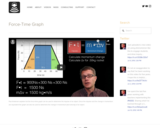
Paul Andersen explains hot the force-time graph can be used to determine the impulse of an object. Since the impulse and the change in momentum are equivalent the graph can also be used to determine the change in momentum (and velocity) of an object.
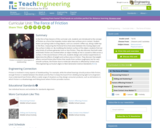
In the first of two lessons of this curricular unit, students are introduced to the concept of friction as a force that impedes motion when two surfaces are in contact. Student teams use spring scales to drag objects, such as a ceramic coffee cup, along a table top or the floor, measuring the frictional force that exists between the moving object and the surface it slides on. By modifying the bottom surface of the object, students find out what kinds of surfaces generate more or less friction. They also discover that both static and kinetic friction are involved when an object initially at rest is caused to slide across a surface. In the second lesson of the unit, students design and conduct experiments to determine the effects of weight and surface area on friction. They discover that weight affects normal friction (the friction that results from surface roughness), but for very smooth surfaces, the friction due to molecular attraction is affected by contact area.
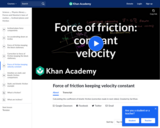
Calculating the coefficient of kinetic friction (correction made in next video)

Block of wood kept stationary by the force of friction (Correction made in next video)

Students use a simple set up consisting of a current carrying wire and a magnet to explore the forces which enable biomedical imaging. In doing so, students run a current through a wire and then hold magnets in various positions to establish and explore the magnetic force acting on the wire. They move the magnets and change the current in the wire to explore how the force changes.
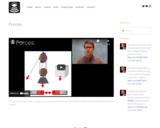
Forces are pushes or pulls on an object. Forces can be determined by measuring the motion of an object. If an object accelerates then a force is present.

How do airplanes fly? It's not magic. Learn about the forces that help (and hinder) airplane flight.

Are you traveling to another country as part of your college career or supervising someone who is? If so, come explore this foreign study course for the Bachelor's degree in Energy Sustainability and Policy. This course helps students get the most from their experience by providing opportunities for reflection and the creation of a Dossier worthy of sharing with a potential employer.
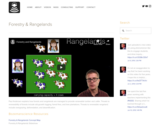
Paul Andersen explains how forests and rangelands are managed to provide renewable lumber and cattle. Threats to renewability of forests include old-growth logging, forest fires, and tree plantations. Threats to renewable rangeland include overgrazing, deforestation, and desertification.
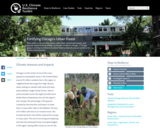
Trees within a city can help reduce urban heat, control stormwater, and provide habitat to local wildlife. As climate conditions change, a Chicago group is working to enhance its urban forest so that the city can continue to receive these benefits.
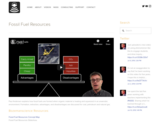
Paul Andersen explains how fossil fuels are formed when organic material is heating and squeezed in an anaerobic environment. Formation, extraction, advantages, and disadvantages are discussed for coal, petroleum and natural gas.
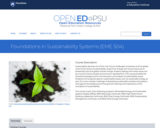
Sustainability denotes one of the main future challenges of societies and the global community. Issues of sustainability range from energy and natural resources to biodiversity loss and global climate change. Properly dealing with these issues will be crucial to future societal and economic development. This course provides the theoretical background for the discussion and analysis of sustainability issues. Students will recognize specific sustainability issues, such as sustainable energy, as part of a more complex challenge of developing sustainable societies and systems, and against the background of the general meaning and implications of the conception of sustainability.